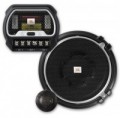Rated power
Rated power of the speaker system. Most often, the average (rms) sound power is indicated as the nominal one.
The most obvious point associated with this characteristic is sound volume: the more powerful the sound system, the louder the sound it can produce, all other things being equal. In addition, compatibility with an external amplifier depends on this indicator: its power should not exceed the power of the sound system, otherwise overloads and damage to the speakers are possible.
Max. power
The maximum power of a short-term (up to several seconds) incoming signal that the speaker can withstand without physical damage. Just like the nominal power, it matters for the selection of acoustics for an amplifier (or vice versa): it is believed that the maximum power of the speakers should be at least 2 times higher than the maximum power of the signal source.
Frequency range
The total audio frequency range reproduced by all speaker speakers.
Obviously, this range should not be too narrow, so that the acoustics do not cut off the lower and/or upper frequency limits of the reproduced sound. At the same time, the human ear perceives sound within 16 Hz - 22 kHz, and it simply does not make sense to provide speakers with a wider frequency range. We also recall that in
mid-frequency acoustics and tweeters, reproducible frequencies are limited due to specialization (for more details, see "Type"). And the overall sound quality will depend not only on this indicator, but also on a number of other features.
Impedance
The term "impedance" refers to the electrical resistance of AC systems whose DC resistance is very low, such as loudspeakers. In modern car audio, the most common impedance is
2,
4 or
8 ohms. This parameter has practically no effect on the sound quality — it serves to select the optimal combination of acoustics and an external amplifier. If the speaker impedance is higher than that for which the amplifier is designed, the sound will be quieter than necessary, and if the impedance is lower, distortion in the sound is possible.
Sensitivity
This parameter determines the volume of the sound of a particular speaker when a certain standard signal is fed to it. Typically, this is considered a 1 W signal with a frequency of 1000 Hz. The higher the sensitivity, the less the speaker is demanding on the power of the amplifier. So, it is believed that for acoustics connected directly to the car radio, the sensitivity should be 80 dB or more; for less sensitive systems it is recommended to use a separate amplifier.
Tweeter diameter
The diameter of the tweeter (speakers) provided in the design of the speaker.
The diameter affects the amount of space needed to install the speaker. However, large cones are not needed for high frequencies, so this dimensions is usually small and does not really affect the overall dimensions of the speaker. The only exception is separate tweeter tweeters (see "Type"), where the overall dimensions of the cabinet are directly related to the dimensions of the cone.

